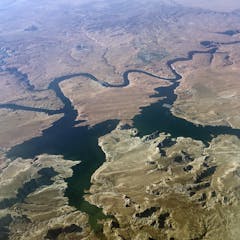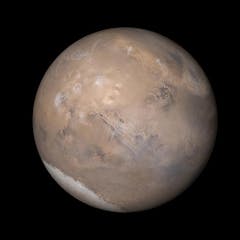
Articles on Lakes
Displaying 21 - 40 of 53 articles

Studies of Lake Windermere show how organisms moving in lakes help keep water layers fresh and reduce greenhouse gas production.

The growing frequency of climate extremes affected human health and caused wide-scale damages to the ecosystems that people depend upon, including agriculture, fisheries and freshwater.

The lives of one in ten of Earth’s species are connected to lakes and their tributaries.

The Supreme Court recently dealt defeat to Florida in its 20-year legal battle with Georgia over river water. Other interstate water contests loom, but there are no sure winners in these lawsuits.

Earth’s floating solar power capacity has grown one-hundredfold in the last five years.

It’s an ecological disaster, but my research shows we should not lose hope.

Because the forecast for rainfall in the Rift Valley basin is a rising trend, the lake levels look set to rise even more in the future.

Conservation or copper? A proposed mine in northern Minnesota pits industrial jobs against a thriving outdoor economy.

New findings boost chances of finding life on Mars, but there are better candidates in the solar system.

As fewer chicks survive, the eerie call of the loon could become more elusive in Ontario.

The water that replenishes groundwater, rivers and lakes is under threat from climate change, pollution and aging infrastructure.

Hundreds of thousands of lakes, rivers and streams in the Arctic exist only because of the permafrost that lies beneath them. The warming Arctic threatens to change that.

Lakes are the final resting place for many of the Earth’s plants – and these organic graveyards are about to get a whole lot busier.

Why did Earth’s climate rapidly cool 12,800 years ago? Evidence is mounting that a comet or asteroid collision is to blame, with new support coming from the bottom of a South Carolina lake.

Scientists are left with two conclusions. Either Nessie is an eel, or she never existed at all.

Freshwater fish are suffering as drought becomes more common and severe. Whether they survive will depend on how governments manage rivers and lakes, and on taking action against climate change.

It’s cheaper to prevent biological invasions than to react after they happen. But it’s hard to detect invaders while there are still just a few of them. Knowing when and where to look can help.

Populations of freshwater species are in a state of deep decline. But we know why and we can reverse the trend.

Roughly 10,000 tons of plastic enter the Great Lakes every year, and scientists want to know where it ends up. There are some parallels to ocean plastics, but also important differences.

A recent study shows plankton that have adapted to road salt have disrupted circadian rhythms. This finding suggests that environmental pollutants could also affect human circadian clocks.
